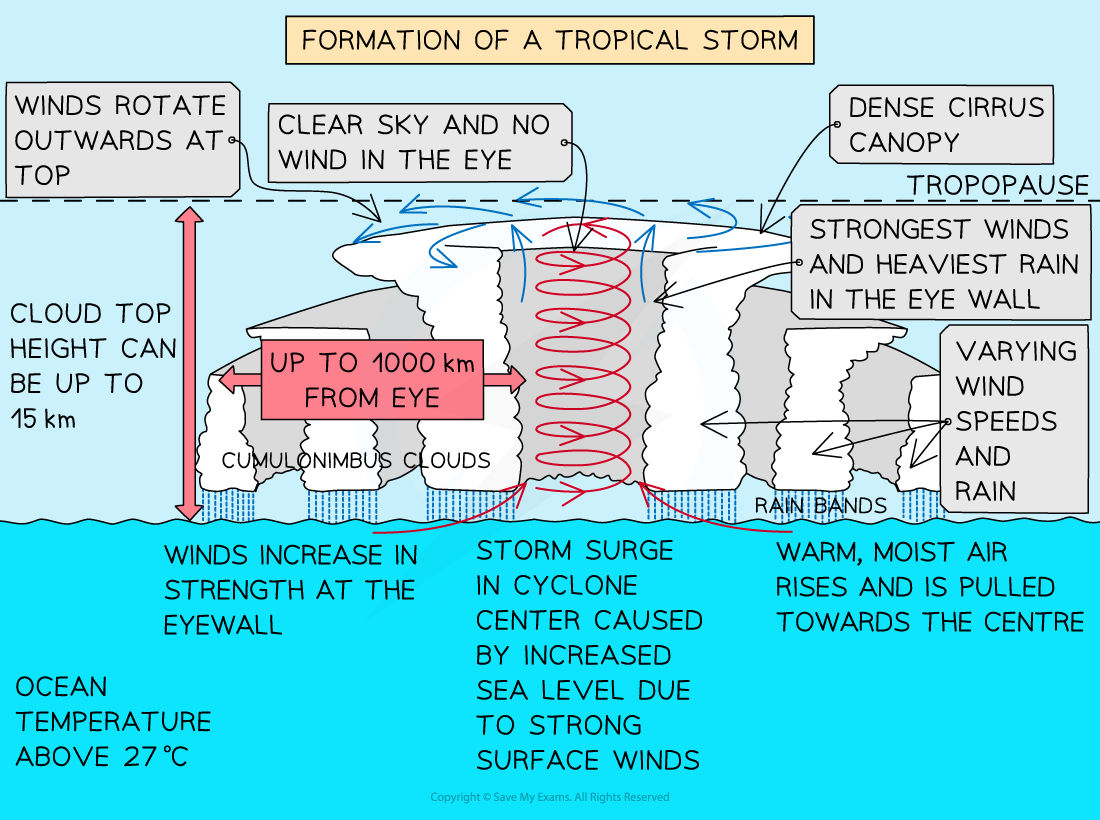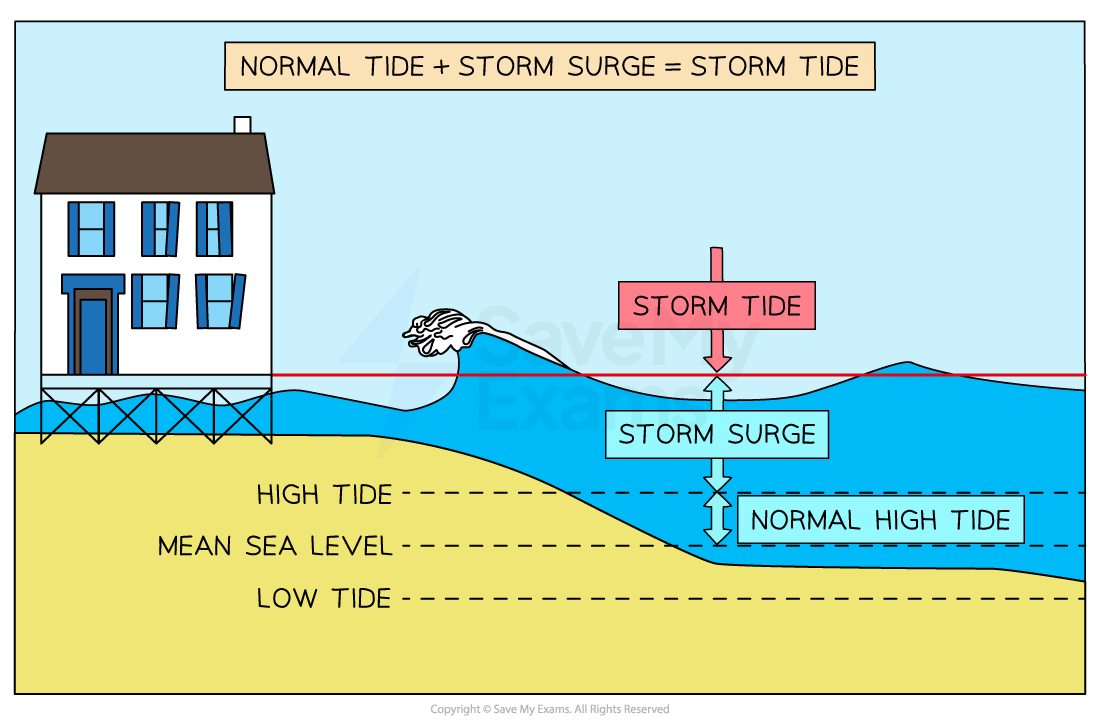Distribution of Tropical Storms
Tropical Storm
- Tropical storms are intense low-pressure systems (below 950mb)
- They are known as:
- Typhoons in the South China Sea and west Pacific Ocean
- Hurricanes in the Gulf of Mexico, Caribbean Sea and west coast of Mexico
- Cyclones in the Bay of Bengal, Indian Ocean and northern Australia
- Characteristics include:
- Heavy rainfall
- High wind speeds (over 119 kmph)
- High waves and storm surges
- Winds spiral rapidly around a calm central area known as the eye
- Tropical storms can be as much as 2000 km in diameter, but winds are not constant across that, they vary with the strongest and most destructive winds being found within the eyewall
- They develop in tropical regions between 5o and 20o north and south of the equator

Distribution of Tropical Storms



